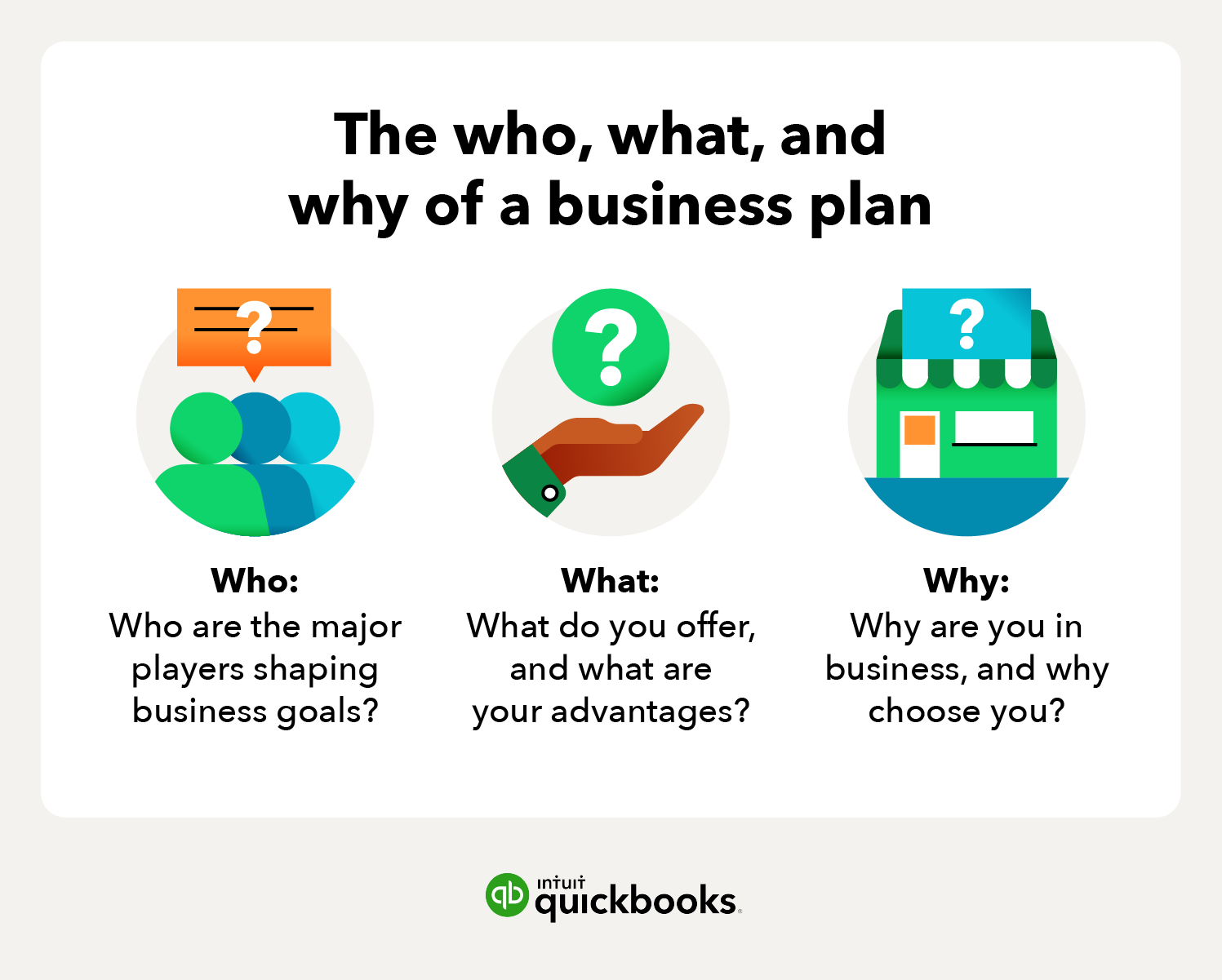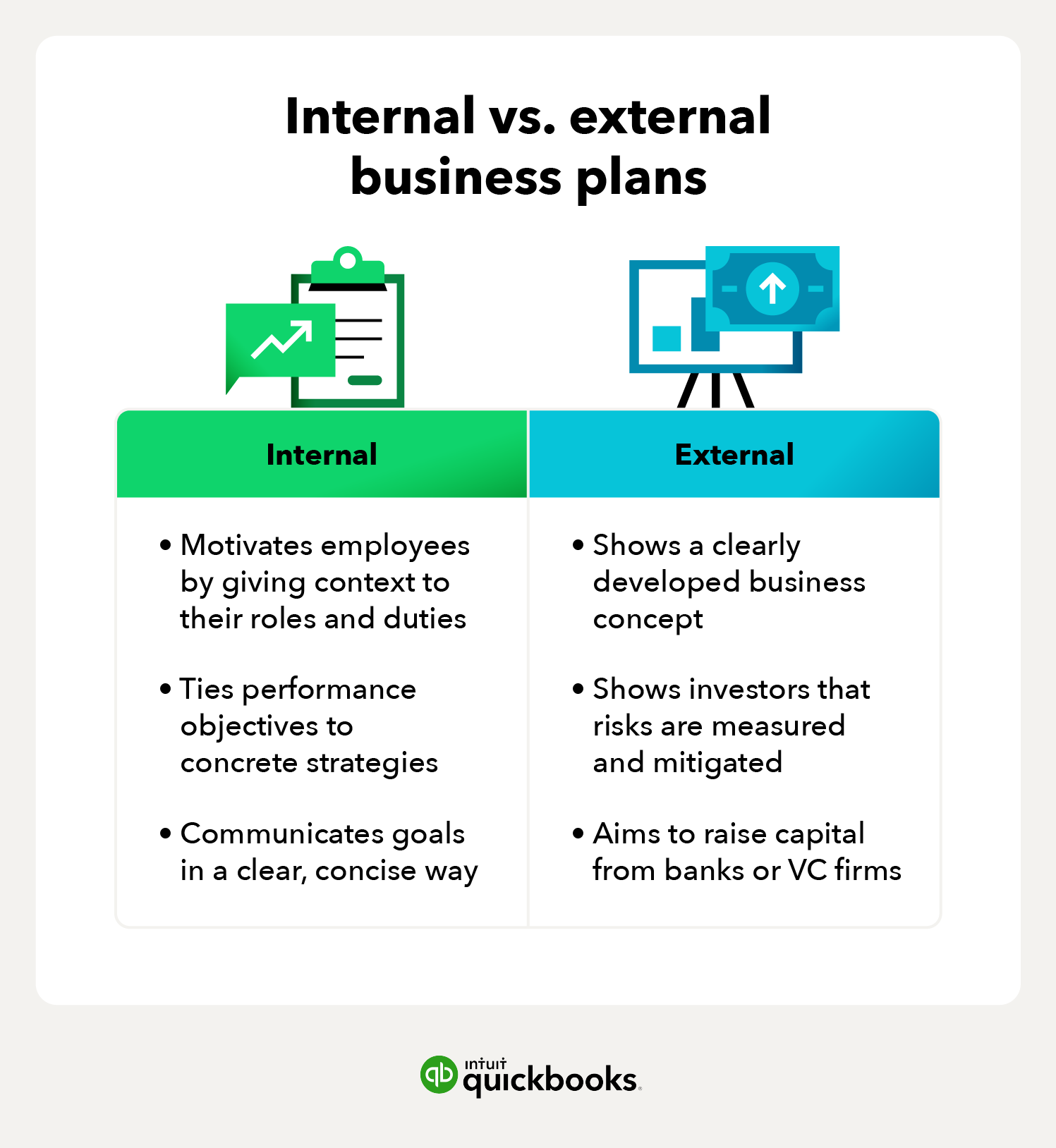Next, create a table or spreadsheet listing your competitors to include in your plan, often referred to as a competitor analysis table.
Example of competitive analysis
Within Richmond’s residential landscaping market, there are only two high-end architectural competitors: (1) Yukie’s Yards and (2) Dante’s Landscape Design. All other businesses focus solely on either industrial projects or residential maintenance.
Yukie’s Yards
- Average cost per project: $12,000
- Ongoing maintenance fee: $200 per month
- Google My Business: 3.1 stars from 163 reviews
- Environmental certifications: None
- Primary marketing channels: Google Ads
Dante’s Landscape Design
- Average cost per project: $35,000
- Ongoing maintenance fee: $500 per month
- Google My Business: 3.7 stars from 57 reviews
- Environmental certifications: None
- Primary marketing channels: Home shows
5. Describe your product or service
This section describes the benefits, production process, and life cycle of your products or services, and how what your business offers is better than your competitors.
When describing benefits, focus on:
- Unique features
- Translating features into benefits
- Emotional and practical payoffs to your customers
- Intellectual property rights or any patents that protect differentiation
For the production process, answer how you:
- Create existing and new products or services
- Source raw materials or components
- Assemble them through manufacturing
- Maintain quality control and quality assurance
- Receive and deliver them (supply chain logistics)
- Manage your daily operations, like bookkeeping and inventory
Within the product life cycle portion, map elements like:
- Time between purchases
- Up-sells, cross-sells, and down-sells
- Future plans for research and development
Example of product or service description
Laura’s Landscapers’ service—our competitive advantage—is differentiated by three core features.
First, throughout their careers, Laura and Raquel Smith have worked at and with Richmond’s three leading industrial landscaping firms. This gives us unique access to the residents who are most likely to use our service.
Second, we’re the only firm certified green by the Richmond Homeowners Association, the National Preservation Society, and Business Leaders for Greener Richmond.
Third, of our 10 completed projects, seven have rated us a 5 out of 5 on Google My Business and our price points for those projects place us in a healthy middle ground between our two other competitors.
- Average cost per project: $20,000
- Ongoing maintenance fee: $250 per month
- Google My Business: 5 stars from 7 reviews
- Environmental certifications: Three (see Appendix)
- Primary marketing channels: Word of mouth, referrals, and home shows
6. Develop a marketing and sales strategy
Your marketing strategy or marketing plan can be the difference between selling so much that growth explodes or getting no business at all. Growth strategies are a critical part of your business plan.
You should briefly reiterate topics such as your:
- Value proposition
- Ideal target markets
- Existing customer segments
Then, add your:
- Launch plan to attract new business
- Growth tactics for established businesses to expand
- Retention strategies like customer loyalty or referral programs
- Advertising and promotion channels such as search engines, social media, print, television, YouTube, and word of mouth
You can also use this section of your business plan to reinforce your strengths and what differentiates you from the competition. Be sure to show what you’ve already done, what you plan to do given your existing resources, and what results you expect from your efforts.
Example of marketing and sales strategy
Laura’s Landscapers’ marketing and sales strategy will leverage, in order of importance:
- Word of mouth
- Referrals
- Reviews and ratings
- Local Google Ads
- Social media
- Home shows
- Direct mail
Reputation is the number one purchase influencer in high-end landscape design. As such, channels 1-4 will continue to be our top priority.
Our social media strategy will involve YouTube videos of the design process as well as multiple Instagram accounts and Pinterest boards showcasing professional photography. Lastly, our direct mail campaigns will send carbon-neutral, glossy brochures to houses in wealthy neighborhoods.
7. Compile your business financials
If you’re just starting out, your business may not yet have financial data, financial statements, or comprehensive reporting. However, you’ll still need to prepare a budget and a financial plan.
If your company has been around for a while and you’re seeking investors, be sure to include:
- Income statements
- Profit and loss statements
- Cash flow statements
- Balance sheets
Other figures that can be included are:
- How much of your revenue you retain as your net income
- Your ratio of liquidity to debt repayment ability
- How often you collect on your invoices
Ideally, you should provide at least three years’ worth of reporting. Make sure your figures are accurate and don’t provide any profit or loss projections before carefully going over your past statements for justification.
Avoid underestimating business costs
Costs, profit margins, and sale prices are closely linked, and many business owners set sale prices without accounting for all costs. New business owners are particularly at risk for this mistake. The cost of your product or service must include all of your costs, including overhead. If it doesn’t, you can’t determine a sale price to generate the profit level you desire.
Underestimating costs can catch you off guard and eat away at your business over time.
- Example: Insurance premiums tend to go up annually for most forms of coverage, and that’s especially true with business insurance. If an employee gets injured, Laura’s Landscapers’ workmen’s compensation insurance to cover this risk will increase.
Example of business financials
Given the high degree of specificity required to accurately represent your business’s financials, rather than create a fictional line item example for Laura’s Landscapers, we suggest using one of our free Excel templates and entering your own data:
- For new businesses: Start up budget template
- For existing businesses: Income statement template
Once you’ve completed either one, then create a big picture representation to include here as well as in your objectives in step two.
In the case of Laura’s Landscapers, this big picture would involve steadily increasing the number of annual projects and cost per project to offset lower margins:
Current revenue for FY2022: $200,000
- 10 completed projects
- ~$20,000 per project
- 15% profit margins
- $30,000 net
FY2022 projections: $360,000
- 18 completed projects
- ~$20,000 per project
- 15% profit margins
- $54,000 net
FY2023 projections: $552,000
- 24 completed projects
- ~$23,000 per project
- 12% profit margins
- $66,240 net
FY2024 projections: $972,000
- 36 completed projects
- ~$27,000 per project
- 10% profit margins
- $97,200 net
8. Describe your organization and management
Your business is only as good as the team that runs it. Identify your team members and explain why they can either turn your business idea into a reality or continue to grow it. Highlight expertise and qualifications throughout—this section of your business plan should show off your management team superstars.
You should also note:
- Roles you still need to hire to grow your company
- The cost of hiring experts to assist operations
To make informed business decisions, you may need to budget for a bookkeeper, a CPA, and an attorney. CPAs can help you review your monthly accounting transactions and prepare your annual tax return. An attorney can help with client agreements, investor contracts (like shareholder agreements), and with any legal disputes that may arise.
Ask your business contacts for referrals (and their fees), and be sure to include those costs in your business plan.
Example of organization and management
Laura Smith, Co-founder and CEO
- Education
- Professional background
- Awards and honors
- Notable clients
Raquel Smith, Co-founder and Chief Design Officer
- Education
- Professional background
- Awards and honors
- Notable clients
Laura’s Landscapers’ creative crews
- Number of employees
- Cumulative years of experience
- Awards and honors
- Notable clients
9. Explain your funding request
When outlining how much money your small business needs, try to be as realistic as possible. You can provide a range of numbers if you don’t want to pinpoint an exact number. However, include a best-case scenario and a worst-case scenario.
Since a new business doesn’t have a track record of generating profits, it’s likely that you’ll sell equity to raise capital in the early years of operation. Equity means ownership—when you sell equity to raise capital, you are selling a portion of your company.
- Remember: An equity owner may expect to have a voice in company decisions, even if they do not own a majority interest in the business.
Most small business equity sales are private transactions. The investor may also expect to be paid a dividend, which is a share of company profits, and they’ll want to know how they can sell their ownership interest. Additionally, you can raise capital by borrowing money, but you’ll have to repay creditors both the principal amount borrowed and the interest on the debt.
If you look at the capital structure of any large company, you’ll see that most firms issue both equity and debt. When drafting your business plan, decide if you’re willing to accept the trade-off of giving up total control and profits before you sell equity in your business.
- Tip: Put together a timeline so your potential investors have an idea of what to expect. Some customers may not pay for 30 days or longer, which means the business needs a cash balance to operate.
The founder can access cash by contributing their own money into the business by securing a line of credit (LOC) at a bank or applying for QuickBooks Capital. If you raise cash through a LOC or some other type of loan, it needs to be paid off ASAP to reduce the interest cost on debt.
Example of a funding request
Laura’s Landscapers has already purchased all necessary permits, software, and equipment to serve our existing customers. Once scaled to $972,000 in annual revenue—over the next three years and at a 10% profit margin—our primary ongoing annual expenses (not including taxes) will total $874,800.
While already profitable, we are requesting $100,000 in the form of either a business loan or in exchange for equity to purchase equipment necessary to outfit two additional creative crews.
10. Compile an appendix for official documents
Finally, assemble a well-organized appendix for anything and everything readers will need to supplement the information in your plan. Consider any info that:
- Helps investors conduct due diligence
- Gives context and easy access to you or your employees
Useful details to cover in an appendix include:
- Deeds, local permits, and legal documents
- Certifications that bolster your credibility
- Business registries and professional licenses pertaining to your legal structure or type of business
- Patents and intellectual properties
- Industry associations and memberships
- State and federal identification numbers or codes
- Key customer contracts and purchase orders
Your appendix should be a living section of the business plan, whether the plan is a document for internal reference only or an external call for investors.
- Tip: As you include documents in the appendix, create a miniature table of contents and footnotes throughout the rest of the plan linking to or calling attention to them.
How to make a business plan that stands out
Investors have little patience for poorly written documents. You want your business plan to be as attractive and readable as possible.
- Keep it brief. A typical business plan can range from 10 to 20 pages. As long as you cover the essentials, less is more.
- Make it easy to read. Divide your document into distinct sections, so that investors can quickly flip between key pieces of information.
- Know your margins. List every cost your business incurs, and make sure that you’re assigning those costs to each product or service that you sell.
- Proofread. Double-check for typos and grammatical errors. Then, triple-check. Otherwise, you might risk your credibility.
- Invest in quality design and printing. Proper layout, branding, and decent printing or bookbinding give your business plan a professional feel.
- Be prepared in advance. Have everything ready to go at least two weeks ahead so you have time to make revisions in case of a last-minute change.
3 tips to update your business plan
It’s a good idea to periodically revisit your business plan, especially if you are looking to expand. Conducting new research and updating your plan could also provide answers when you hit difficult questions.
Mid-year is a good time to refocus and revise your original plans because it gives you the opportunity to refocus any goals for the second half of the year. Below are three ways to update your plan.
1. Refocus your productivity
When you wrote your original business plan, you likely identified your specific business and personal goals. Take some time now to assess if you’ve hit your targets.
- Example: If you planned to launch a new tips and trends video series and it hasn’t happened yet, what’s stopping you? Put a timeline together and set a launch date.
If you only want to work a set number of hours per week, you must identify the products and services that deliver the returns you need to make that a reality. Doing so helps you refocus your productivity on the most lucrative profit streams.
Also, use what you’ve achieved and the hard lessons you’ve learned to help you re-evaluate what is and isn’t working.
2. Realign with your goals
Do a gut check to determine whether all of your hard work is still aligned with your original goals and your mission statement. Ask yourself these questions:
- Are my goals still relevant?
- Am I still focused on the big picture?
- Where do I want to be a year from now?
- Will my existing plan still take me where I want to go?
These questions may be tough to answer at first glance, but they reveal your ties to your goals and what most likely needs to change to achieve new wins.
3. Repurpose your offerings
If your time has become more focused on small projects rather than tangible growth and building a valuable client list, consider packaging your existing products or services differently. Can you bundle a few things together?
- Example: Laura’s Landscapers might be able to offer a special pool and patio package. Doing so might help them bring in fewer yet higher-paying projects. Perhaps they can offer a maintenance package as well to keep that customer long term.
You must deliberately manage your revenue streams, and that might require shuffling things around a little to focus on what is working for you.
Business plan template
Even if you don’t plan on seeking investments early on, there are other important reasons to use a business plan template to write a great business plan:
- Clarifies what you’re trying to accomplish
- Identifies opportunities to understand your market, like demographics and behaviors
- Establishes the role of each team member
- Gives team members a benchmark to reference and stay on track
- Helps catch errors to make sure financial projections are accurate
- You’ll see the holes and blind spots that could cause future issues
Download the following template to build your business plan from the ground up, considering all the important questions that will help your investors and employees.






